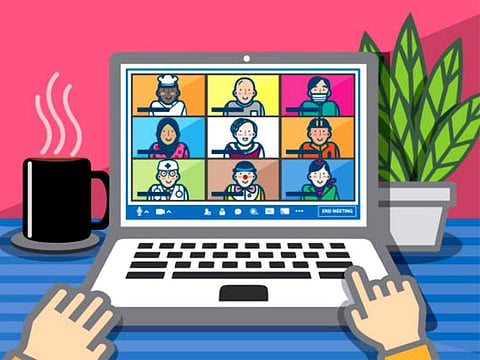We miss our workplaces for a special reason
Now there are videos and websites that help you recreate feeling of being at a workplace

In the initial days of WFH (working from home) office-goers were ecstatic at the thought of escaping the daily traffic jams and the stress of commuting to work. Now they could sleep longer and not have to rush to get dressed. But, as the days turned into months, the euphoria began to wear off. They began to miss the human interaction.
The water cooler or drink dispenser at the workplace has been a gathering place. At all times of the day one could see a knot of people chatting at this meeting place while they waited for the kettle to boil. Coffee and tea mugs were lined up, awaiting their turn for a refill. No one was in a particular hurry as conversation swirled along with the tea bags. Sometimes the trysting ground was bursting to capacity as information flowed and people exchanged “news” snippets on colleagues or even superiors as well as the latest developments in manpower shake-ups.
If a person under discussion happened to make an entrance just then, there was a sudden silence followed by general conversation. But if you were a sensitive person, you could sense the atmosphere was so thick it could be cut with a knife. If you tried to find out the topic of conversation, you were put off by non-committal answers. Sensing the uncooperative mood, you would be wise to beat a hasty retreat, muttering about work to be done. So, you got out of a sticky situation and also made them feel guilty about staying away from work.
Also Read: A curious case of high electricity bills
Also Read: COVID-19: This pandemic and my hairstyle
Also Read: The stigma around COVID-19
Also Read: Home chefs is the latest trend in town
Those minutes spent at the coffee and tea dispensing centre were rejuvenating as they gave you much to mull over. Sensing the importance of these breaks, virtual meetings are no longer work-related conversations. Team leaders are allowing employees to talk about everything under the sun. These discussions centre around daily routines and mental health. The team leaders realise that casual breaks and talking about random things helps de-stress and maintain a personal connection. After all one spent the better part of the day at the office and the tea or coffee breaks afforded an opportunity to air unfiltered thoughts in the presence of people one could trust.
A psychologist says that for a lot of people, the workplace was a space where you were like a family. Now the pandemic has taken that away from us.
Missing the camaraderie and interaction
Although we may not be willing to admit it, we miss the camaraderie and interaction at the workplace as well as the post-work plans such as participating in a team sport or merely hanging out together somewhere. I remember some former male colleagues opting for a game of cricket after work. There was meticulous planning of the venue and start time and, the next day, when they returned to work, you could see the bonding which expressed itself in dissection of the game amid much laughter.
There are also more distractions while working from home as spouses and children can make demands on your time and it is more difficult to put them off. It’s simpler at work because a phone call from home can be dealt with by a terse “I’m busy”. Although I have seen some workers indulging in long conversations with spouses at the workplace while their work is put on the back burner!
Somehow the ambience at the workplace, the constant chatter and phones ringing is what you begin to miss. You tell yourself that you wouldn’t even mind that annoying colleague or boss who interrupted you at work for inane reasons.
That’s when you realise that you are suffering from withdrawal symptoms caused by a long absence from the vibrant atmosphere of an office. Now there are videos and websites that can help you recreate the feeling of being at a workplace.
Vanaja Rao is a freelance writer based in Hyderabad, India
Sign up for the Daily Briefing
Get the latest news and updates straight to your inbox



_resources1_16a08545996_medium.jpg?w=320&auto=format%2Ccompress&fit=max)



